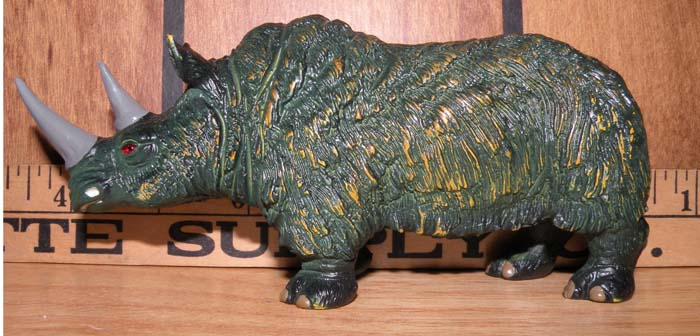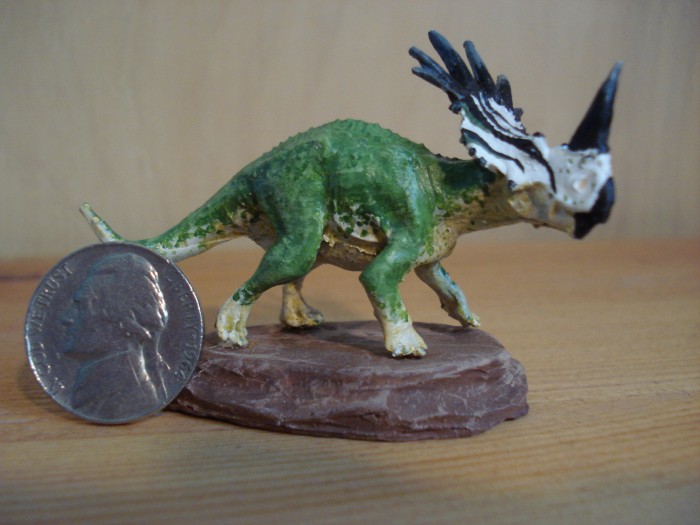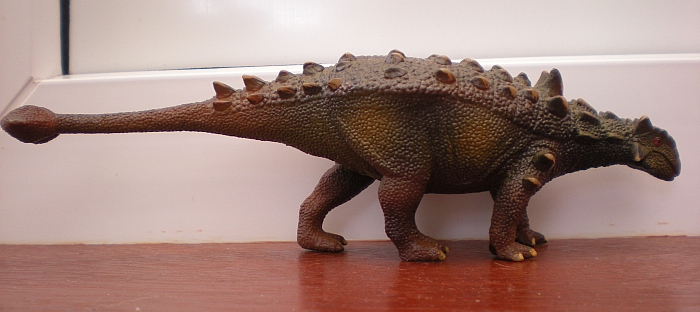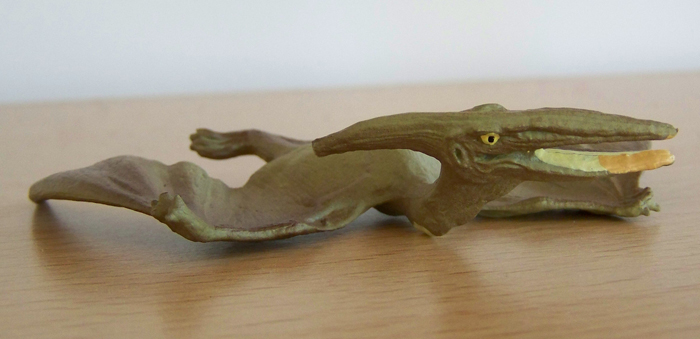Review: Rhoetosaurus (CollectA)
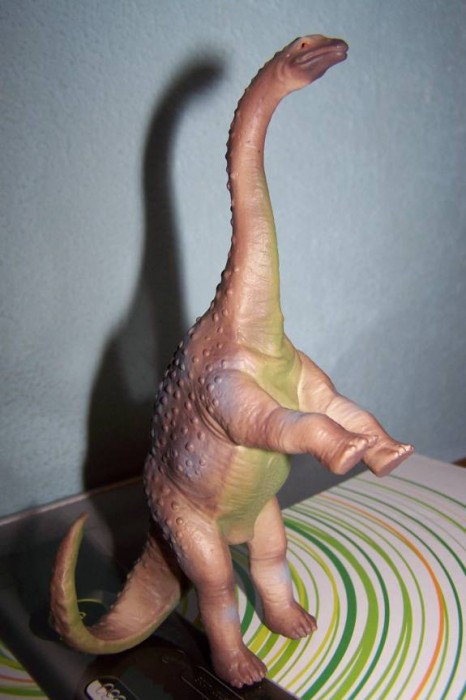
3.4 (8 votes)
Review by Nathan, edited by Plesiosauria.
Rhoetosaurus brownei was an Australian sauropod that lived around the mid-Jurassic Period and is one of the oldest known sauropods. Little evidence has been found for this dinosaur, only a partial hind leg, some vertebrae, ribs, and pelvic elements are known, yet CollectA decided to release one as part of their standard collection back in 2009.
Rhoetosaurus brownei was an Australian sauropod that lived around the mid-Jurassic Period and is one of the oldest known sauropods. Little evidence has been found for this dinosaur, only a partial hind leg, some vertebrae, ribs, and pelvic elements are known, yet CollectA decided to release one as part of their standard collection back in 2009.
Review: Entelodont (AAA)
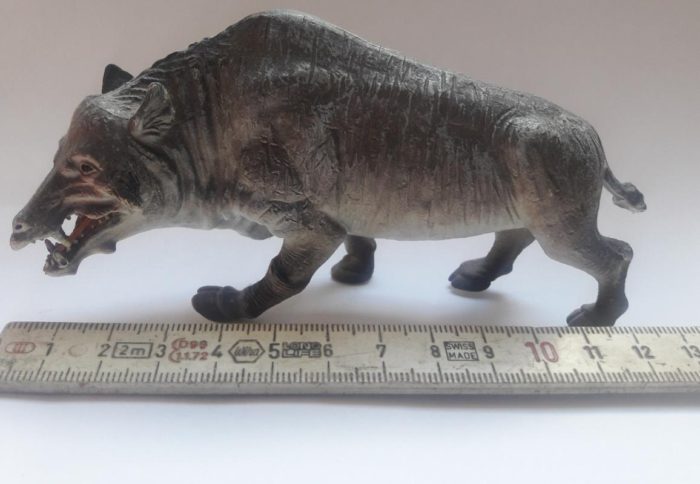
4 (9 votes)
Admittedly, there were lovelier animals to have walked the earth in prehistoric times than entelodonts, omnivorous beasts that were two metres tall and four metres long. Entelodonts were especially abundant in what are now Mongolia, China and Northern America and strolled through the landscape searching for any kind of food in the Eocene epoch – mainly probably carrion.
Review: Styracosaurus (Prehistoric Masterpiece Collection by X-Plus)

4.7 (9 votes)
Review and photos by Patrick Bate. Edited by Plesiosauria.
Styracosaurus was a centrosaurine ceratopsian from Cretaceous North America. Its unique and formidable horn arrangement have made it perhaps the second-most popular toy ceratopsian, behind Triceratops. This effort by X-Plus is one of two dinosaurs from their (retired) Prehistoric Masterpiece collection.
Styracosaurus was a centrosaurine ceratopsian from Cretaceous North America. Its unique and formidable horn arrangement have made it perhaps the second-most popular toy ceratopsian, behind Triceratops. This effort by X-Plus is one of two dinosaurs from their (retired) Prehistoric Masterpiece collection.
Review: Carnotaurus (2011 Version)(Carnegie Collection by Safari Ltd.)
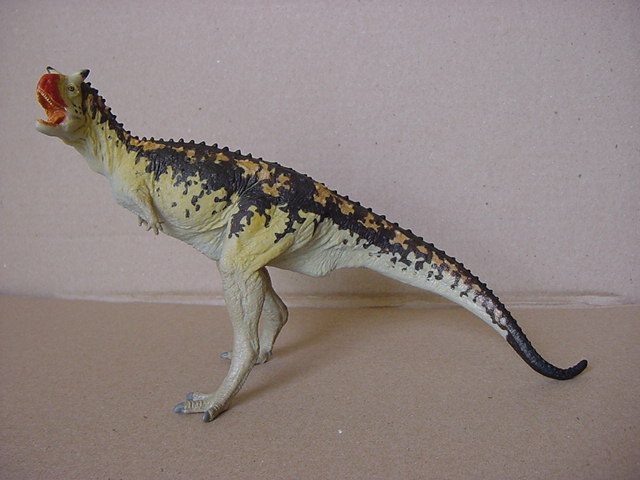
4.4 (29 votes)
The year was 1985. When the world was first introduced to Carnotaurus sastrei, the stock market went wild, the streets were flooded with panicked mobs, and the skies became saturated with an eerie purple tinge.
Alright, maybe that isn’t entirely true. The first big break for our brow-horned friend probably came in Crichton’s bestselling sequel to Jurassic Park, The Lost World, where Carnotaurus prowled the darkness with chameleonic camouflage (speculative, naturally).
Review: Styracosaurus (Antediluvia Collection)
Review: Torosaurus (Collecta)

3.8 (19 votes)
I know I’ve said it before, but Collecta really have upped their game this year, spurred on by what seems like a genuine urge to please us geeks. It’s much appreciated, as it’d be easy for a company to not give a stuff about accuracy/aesthetics as long as the products were selling (they ARE toys, after all).
Review: Ankylosaurus (Soft model by Favorite Co. Ltd.)
Review: Spinosaurus Hunting (Desktop Model by Dinostoreus)
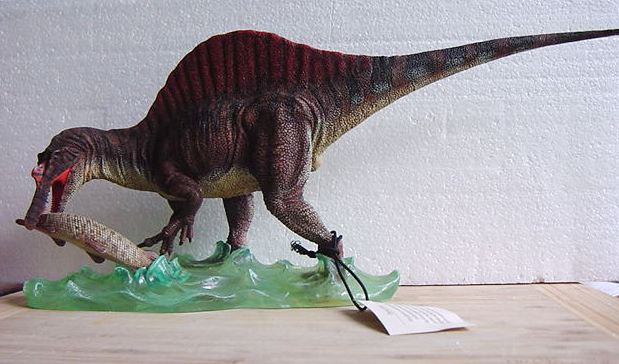
4.8 (4 votes)
In addition to their primary line of single-character maquettes, Dinostoreus produces a number of diorama-style pieces which portray prehistoric animals in their natural environment. One that undoubtedly draws attention is this model, featuring the beloved Spinosaurus snatching a snack from churning Cretaceous waters.
Review: Pteranodon (Carnegie Collection by Safari Ltd)
Review: Concavenator (CollectA)
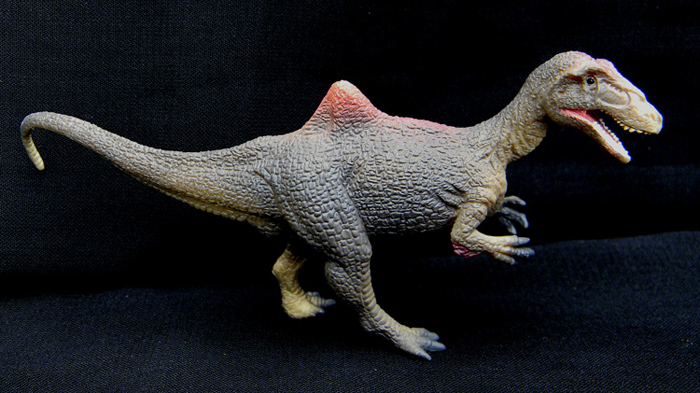
3.3 (17 votes)
Review by Nathan Morris (Takama), photos by Bokisaurus and Simon. Edited by Plesiosauria.
Concavenator corcovatus (meaning hunchback hunter from Cuenca). Was a 6-meter long, and primitive carcharodontosaurian that lived 130 milion years ago during the early Cretaceous Period. It was discovered last year [2010] at the Las Hoyas Plateau, and is notable for a hump that pertruded from its back.
Concavenator corcovatus (meaning hunchback hunter from Cuenca). Was a 6-meter long, and primitive carcharodontosaurian that lived 130 milion years ago during the early Cretaceous Period. It was discovered last year [2010] at the Las Hoyas Plateau, and is notable for a hump that pertruded from its back.
Review: Acrocanthosaurus (Antediluvia Collection)(David Krentz)

3.8 (15 votes)
As more species slip into mainstream consciousness, the ever-popular theropoda sees its previously obscure members slowly becoming household names. Nowhere is this more evident than Acrocanthosaurus atokensis, which has quickly soared to the popularity levels of Dilophosaurus and Spinosaurus. Alright, maybe ol’ Acro isn’t quite that popular – those two examples did have the dubious backing of Hollywood, after all.

